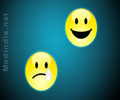The new official clinical practice guidelines on the diagnosis and management of exercise-induced bronchoconstriction (EIB) have been published by the American Thoracic Society.

The exact prevalence of EIB among asthma patients is not known, but prevalence estimates among subjects without an asthma diagnosis are as high as 20%. Prevalence estimates among athletes are even higher, ranging between 30% and 70% for Olympic and elite-level athletes.
"Given the high prevalence of EIB, evidence-based guidelines for its management are of critical importance," said Dr. Parsons. "These new guidelines address not only the diagnosis and management of EIB but address other important issues related to EIB, including environmental triggers and special considerations in elite athletes."
Treatment recommendations in the guidelines include use of a short-acting beta-agonist before exercise in all EIB patients. For those patients who continue to have symptoms after beta-agonist treatment, the guidelines recommend use of a daily inhaled corticosteroid, a daily leukotriene receptor antagonist, or a mast cell stabilizing agent before exercise.
For all patients with EIB, the guidelines recommend that warm-up exercises be performed before planned exercise.
Known environmental triggers for EIB include cold air, dry air, ambient ozone, and airborne particulate matter. These and other environmental factors may contribute to the increased prevalence of EIB seen among competitive ice skaters, skiers, swimmers, and distance runners. Many of the treatments used to treat EIB, including beta-agonists, are banned or restricted in competitive athletics, as some are considered performance-enhancing, and treatment must be tailored according to the guidelines of the governing bodies of these sports.
Source-Eurekalert
 MEDINDIA
MEDINDIA




 Email
Email




